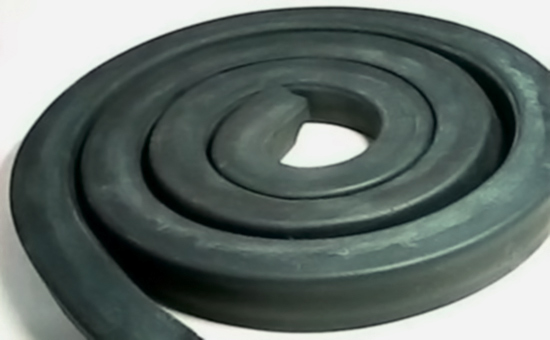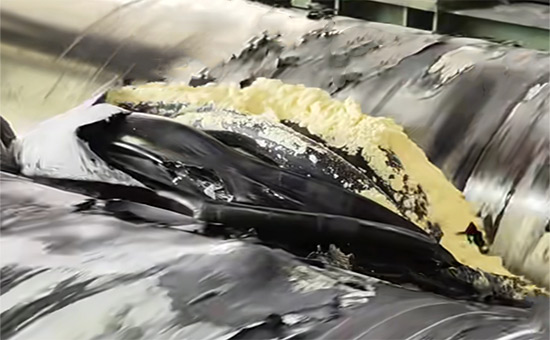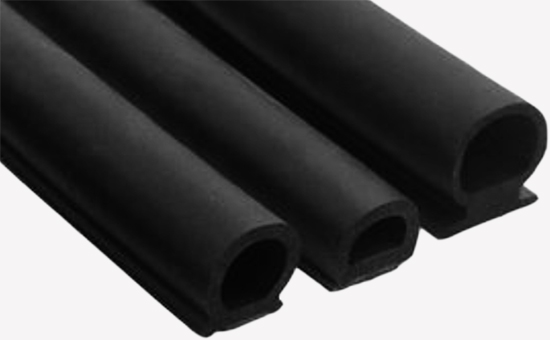EPDM reclaimed rubber retains the basic performance characteristics of EPDM rubber, with excellent high and low temperature resistance, ozone resistance and aging resistance, and can be used alone or in combination with EPDM and butyl rubber, which can be used to produce various sponge rubber products for buffering, sound insulation, heat insulation, etc., such as sponge sealing strips in automotive sealing systems. When using EPDM reclaimed rubber to produce sponge foam rubber products, the selection of foaming agent is very important, and the characteristics of commonly used foaming agents must be fully understood.
1. Sodium bicarbonate
Sodium bicarbonate, commonly known as baking soda, is a typical silicate inorganic foaming agent, white powder, thermal decomposition temperature is about 150 °C, carbon dioxide and water vapor are produced after decomposition, and the gas generation is about 100mL/g. When sodium bicarbonate is used as the foaming agent of EPDM reclaimed rubber sponge foaming rubber products, the dosage is controlled at 5-15 parts, and the appropriate amount of stearic acid is used to promote decomposition, and the pore size of the sponge prepared is small and uniform. Sodium bicarbonate has a small gas generation and is often used in combination with organic foaming agents.

2. Foaming agent AC
The chemical name of blowing agent AC is azodicarbonamide, yellow-orange powder, the thermal decomposition temperature is about 200 °C when used alone, and the main gases produced after decomposition are N2 and CO, and the gas emission is about 190-240mL/g. The use of EPDM reclaimed rubber to produce sponge sealing strips often has foaming agent AC, which has a large gas generation and low gas permeability, and the products have the characteristics of good crust and tastelessness.
The AC decomposition temperature of the foaming agent is high, and the AC decomposition temperature of the foaming agent can be reduced to the range of 130-180 °C with the use of stearic acid, metal oxides (such as ZnO, MgO, etc.), fatty acid metal salts (zinc stearate, etc.), urea, commonly used vulcanization accelerators, etc., so that the foaming and vulcanization can be better matched. It should be noted that the blowing agent AC vulcanization process is susceptible to the influence of moisture, and if the decomposition is incomplete in the light-colored rubber compound, it will have color pollution, which will make the color of the rubber material yellow.
3. Foaming agent H

The chemical name of foaming agent H is dinitrosoamyltetramine, light yellow powder, the thermal decomposition temperature is about 200 °C when used alone, the decomposition products are mainly N2 and NH3, etc., and the gas generation is about 250mL/g. The foaming agent H has a large gas generation, and the decomposition temperature is significantly reduced after adding the foaming auxiliary, and the foaming is easy, and it is widely used in EPDM reclaimed rubber sponge foaming products, with a dosage of among 2-10 parts.
The decomposition temperature of foaming agent H is high, and the use of urea, organic acids, accelerators, etc. can reduce the decomposition temperature, among which urea can not only significantly reduce the decomposition temperature of foaming agent H (120-140 °C), but also effectively eliminate odor; Stearic acid can not only be used as a vulcanization active agent and foaming aid in EPDM sponge compound, but also can reduce the decomposition temperature of foaming agent H to about 130 °C, which is the most versatile foaming additive for foaming agent H, with a general dosage of about 2.5-5 parts, and accelerator M can also reduce the decomposition temperature of foaming agent.
4. Foaming agent OBSH

The chemical name of the blowing agent OBSH is diphenylsulfonylhydrazide, white powder, the thermal decomposition temperature is about 150-160 °C, the decomposition products are mainly N2 and water vapor, and the gas generation is about 115-130mL/g. The foaming agent OBSH has E4LYY719 low thermal decomposition temperature, fast decomposition speed, no coloring pollution, odorless and non-toxic decomposition products, etc., easy to pore during use, uniform and delicate cell structure, good dimensional stability of sponge, widely used in EPDM recycled rubber model or extrusion sponge products, the dosage is among 2-10 parts.
It should be noted that the blowing agent OBSH has a small gas generation, which makes it difficult to prepare low-density sponges with high porosity, and is usually used in combination with the blowing agent AC. Urea, commonly used accelerators, etc. can further reduce the decomposition temperature of OBSH of foaming agent to 110-140 °C.
5. Urea

Urea, white solid particles or fine powders, with a melting point of about 130 °C, can be separated and liberated by itself, and is widely used as a foaming aid.
When using EPDM reclaimed rubber as the main raw material to produce sponge foamed rubber products, it is not only necessary to select the foaming agent with the appropriate decomposition temperature according to the molding process, but also to make the decomposition of the foaming agent within the temperature range of vulcanization control through the application of foaming additives. The compounding agent in the rubber compound affects the decomposition rate of the blowing agent, which is more difficult to adjust than vulcanization. Therefore, the formula of EPDM reclaimed rubber foaming products is generally determined after the foaming system is determined, and then adapted to the corresponding foaming system through the adjustment of the vulcanization system; Subsequently, I will share with you the vulcanization system and foaming system of EPDM reclaimed rubber sponge foam rubber products.
Exclusive original article [commercial authorization] reprint, excerpt and excerpt in any form are prohibited without written authorization. Focus on Hongyun rubber: learn the process formula and raw material technology of producing rubber products from recycled rubber to help you reduce costs and increase profits